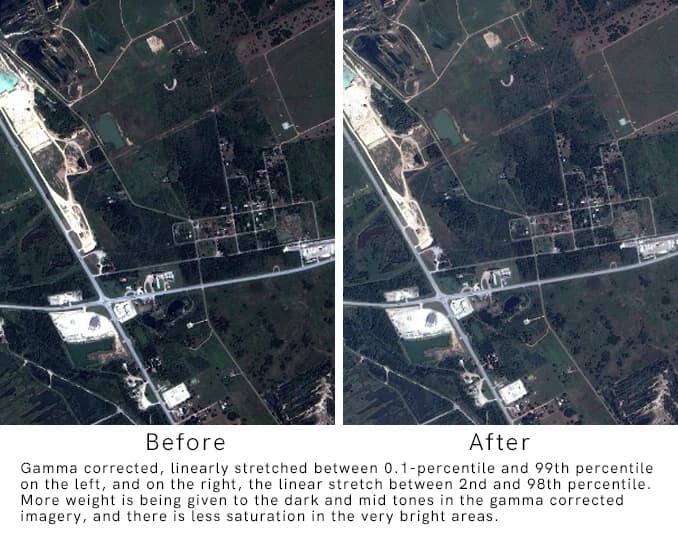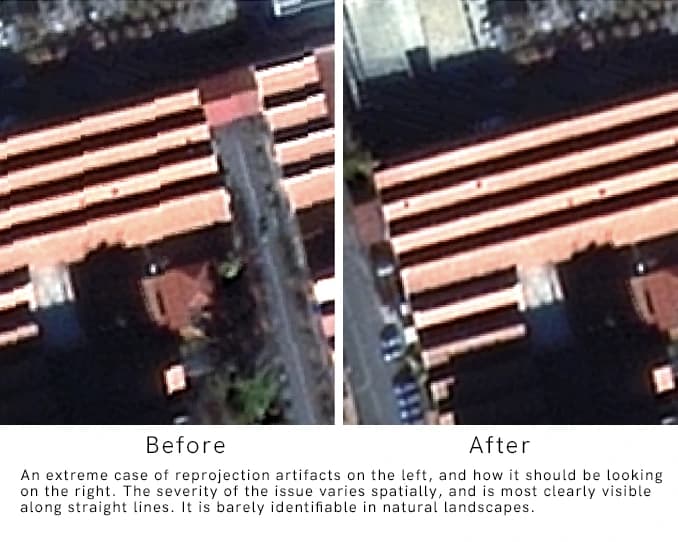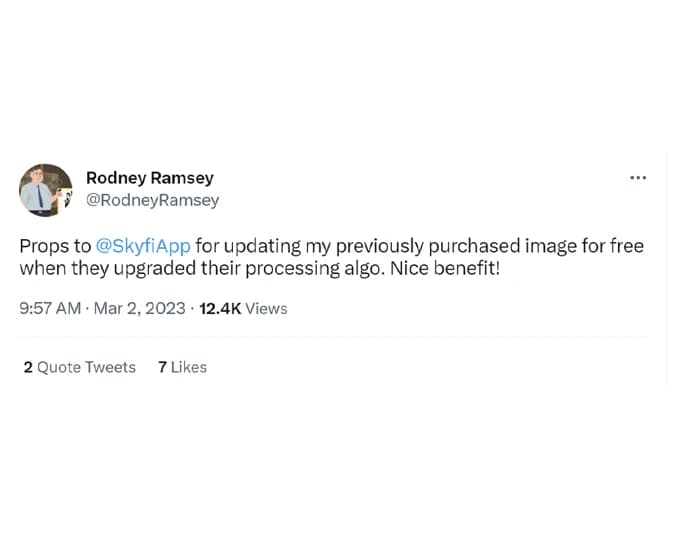
You Talked, We Listened: The Power of Customer Feedback
At SkyFi, we are on a mission to easify access to Earth observation (EO) data. Earth observation data refers to any type of data or information that is collected about the Earth's surface or atmosphere from space, air, or ground-based sensors. This data can be used by a variety of industries as accurate, up-to-date data that can help make informed decisions. As we pride ourselves on being Earth observation’s most customer-centric company, it’s critical that we keep the customer experience at the forefront of every decision we make.
Customer Needs Will Shape The Future Of Earth Observation
We launched our product with the intention of giving users groundbreaking access to EO data and then continuously adapting our product to meet customer needs. As a startup with a nimble team, we have the advantage of being able to quickly deploy new features and solutions to existing issues. "Startups are so great like that — see a problem and just FIX IT THAT WEEK," John Carmack said in his most recent tweet about SkyFi.
The week of our launch, we were #1 on Hacker News thanks to a post about our competitive pricing, which led to hundreds of comments on Hacker News, as well as engaging conversation on the SkyFi Twitter account. Our team spent the following days reading through the online conversations, replying to comments, and organizing the feedback. We immediately started looking into the issues that were brought to our attention. Some issues were clear and easy to resolve, while other feedback required more investigation, testing, and ultimately a deploying scalable solution.
Customers Identified Key Problems
Problem #1: Image Quality and Compression
When we first launched the product, we had a scientific focus on the data and relied on standards from the geospatial industry for many of our methods. When your order is delivered via email, it includes a PNG and "full package" where you can find a GeoTIFF file, as well as some metadata for the image. One of the fundamental challenges associated with the PNGs is that satellite images are often acquired with 10 to 12 bits of data, and both the PNG and TIFF formats only support 8 or 16 bits. This resulted in around 2% of the image being saturated which created a poor visual representation for many of our users.

We decided to compress the information down to 8 bits for the PNGs and accept a very small loss of information, with the upside that the files would be easily viewable for new users who may not have access to the specialized software needed to manipulate images. We also applied a 2.2 gamma correction to linearize the distribution and give more weight to the dark and mid tones of the visualization.
Problem #2: Spatial Artifacts Distorted in Images
In some images, spatial artifacts showed up that either looked like image compression artifacts or anti-aliasing effects. Our customers pointed out that some images had weird patterns or distortions in them. We investigated to figure out what was causing it, and ultimately concluded that the issue occurred when we were reprojecting the data from one geospatial coordinate system to another – a standard practice in EO. While this adjustment may make the image appear slightly tilted in some cases, we prioritized the alignment of spatial artifacts per our customer's requests.

We tried two different ways to fix it - either improve the method we were using to rearrange the picture or avoid rearranging it altogether. We decided to avoid rearranging it because it was causing problems with the image quality, and none of our customers actually needed it to be rearranged. Now we are using the standard Universal Transverse Mercator projection system, which is the original coordinate system used when we receive the data from our providers.
Making Changes Based on the Crowd: Our Approach to Product Development
SkyFi is a customer-focused company in a technology-focused industry. While our partners are focused on their complex technology, we are focused on the customer’s needs. We do this by constantly absorbing our online conversations, sharing it internally, and identifying solutions to globally improve the customer experience. Our developers test these solutions to ensure they work for both our mobile and desktop applications and can scale as we integrate different data and analytics partners.

As mentioned in the tweet above, if we find a problem that applies to existing customers, we retroactively make changes to ensure that existing purchasers benefit from new features. After the image quality issues were identified and resolved, we reprocessed every existing image purchased and re-sent them to our customers.
At SkyFi, we take a data-driven approach to customer feedback. While we do listen to individual feedback, we also aggregate feedback to identify the biggest gaps that need to be addressed. Our goal is to create a product that enables all users to have a positive impact on our planet, and we will continue to invent features to best serve the masses.


